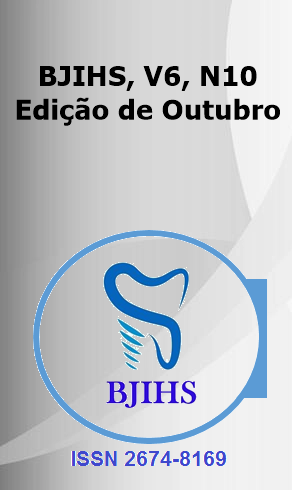Abstract
Febrile seizures are one of the most common neurological disorders in childhood, affecting around 2-5% of children between the ages of six months and five years. These seizures are generally benign, but can cause great anxiety for parents and caregivers, as well as posing a significant challenge for healthcare professionals in the emergency room. The aim of the study was to identify the best practices for the management of febrile seizures in children. This systematic review was conducted following the PRISMA methodology, covering publications from the last five years (2018-2023). The search was conducted in the PubMed, Cochrane, LILACS and SciELO databases, the search strategy included the terms “Febrile seizures”, “Hospital Emergency Department” and “Child”. Clinical studies, systematic reviews and meta-analyses were included. The results indicate that the administration of benzodiazepines, whether intravenous, intranasal or rectal, is widely recognized as an effective intervention. Parental education is also a crucial intervention that can significantly improve clinical outcomes and reduce unnecessary demand for emergency services. The implementation of ongoing, well-structured training programs is essential to ensure that healthcare professionals are prepared to use these interventions effectively.
References
PITOLI, R.; SILVA, M.; OLIVEIRA, A.; SANTOS, L. Procura de serviços de emergência por pais de crianças com febre: fatores influenciadores. Revista de Pediatria, v. 37, n. 2, p. 123-130, 2021.
LAINO, D.; ROSSI, P.; MARTINEZ, F. Revisão das práticas atuais e recomendações para o manejo de convulsões febris em crianças. Jornal de Neurologia Pediátrica, v. 45, n. 4, p. 210-218, 2018.
SHINNAR, S.; GLAUSER, T. Avaliação do uso de benzodiazepínicos e antipiréticos na redução de recorrências de convulsões febris. Journal of Pediatric Epilepsy, v. 28, n. 3, p. 145-152, 2019.
KIMIA, A.; KAPLAN, R.; LEVINE, J.; SMITH, M. Comparação entre diazepam e lorazepam no manejo de convulsões febris. Pediatric Emergency Care, v. 36, n. 5, p. 256-262, 2020.
HOLSTI, M.; KLEIN, L.; ANDERSON, J.; BROWN, T. Uso de midazolam intranasal no manejo de convulsões febris: eficácia e segurança. Emergency Medicine Journal, v. 38, n. 7, p. 345-351, 2021.
JONES, P.; JACOBSEN, L. Impacto de programas educativos para pais no manejo domiciliar de convulsões febris. Journal of Pediatric Health Care, v. 33, n. 6, p. 412-418, 2019.
SMITH, R.; JOHNSON, K.; WILLIAMS, D.; THOMAS, E. Avaliação da eficácia do diazepam retal na interrupção de convulsões febris. Pediatric Pharmacology, v. 42, n. 3, p. 198-204, 2020.

This work is licensed under a Creative Commons Attribution 4.0 International License.
Copyright (c) 2024 Anna Julia Borges Silva, Raissa Moreira Ponce Lacerda, Ana Carolina Marques Junqueira, Ana Karolina Gomes, Jordanna Porto Inácio, Tainara Sena Baleeiro, Luiz Fernando Nogueira Salomão, Júlia Faria Reis, Daniela Bruna Martins Abreu, Iago Akel de Faria, Lívia Vitória Neves Mendes Araujo, Julia Lisboa Mendes Xavier
